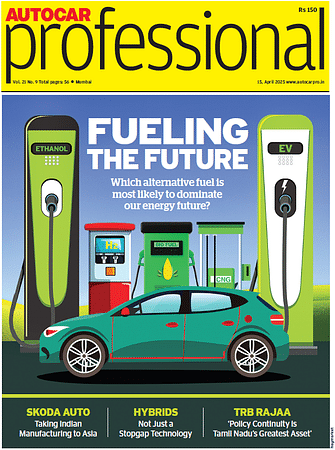Bajaj Cuts Pulsar Prices as Competition Hots up
While Bajaj reported a 6.4% sales increase in 2024, driven by models like the Pulsar N160 and NS200, the brand faces stiff competition from newer entrants.
Bajaj Auto Ltd. has announced that its Pulsar motorcycle line has surpassed 2 crore units in sales across more than 50 countries. To mark this milestone, the company is offering special celebration prices on select models with savings up to ₹7,300.
Launched in 2001, Pulsar reached its first crore in sales over 17 years (2001-2018), while the second crore was achieved in just six years (2019-2025), demonstrating its growing global presence, the company said. Currently, Pulsar holds the first or second position in more than 20 countries.
"Reaching the 2-crore milestone in more than 50 countries is a badge of honor of the unflinching love and trust of Pulsarmaniacs everywhere," said Sarang Kanade, President of Motorcycle Business Unit at Bajaj Auto Ltd.
The special celebration prices include:
- Pulsar 125 Neon: ₹84,493 (savings of ₹1,184)
- Pulsar 125 Carbon Fibre: ₹91,610 (savings of ₹2,000)
- Pulsar 150 Single Disc: ₹1,12,838 (savings of ₹3,000)
- Pulsar 150 Twin Disc: ₹1,19,923 (savings of ₹3,000)
- N160 USD: ₹1,36,992 (savings of ₹5,811)
Bajaj Auto also revised prices for NS125 Base (₹99,994), NS125 ABS (₹1,06,739), and N160 TD Single Seat (₹1,22,722). The Pulsar 220 F offers savings of ₹7,379 in Maharashtra, Bihar, and West Bengal only.
Pulsar's product range spans from 125cc to 400cc and is built on three platforms: Classic, NS, and N. Bajaj Auto is India's largest motorcycle exporter, with two out of three bikes exported internationally carrying a Bajaj badge. The company is also the world's largest manufacturer of three-wheelers.
Rising Competition
India’s premium motorcycle market, encompassing bikes priced above Rs 1.6 lakh or with engines of 200cc and beyond, has witnessed remarkable growth over the past three years (2022-2025) as well as rising competition.
This segment, once a niche corner of the two-wheeler industry, has transformed into a dynamic battleground fueled by rising disposable incomes, a growing appetite for performance-oriented machines, and an influx of global and domestic players. With sales surging and new brands like Triumph making a bold entry, the market is evolving rapidly, particularly in the retro sub-segment, while legacy brands like Bajaj’s Pulsar face unprecedented competition.
From 2022 to 2025, the premium motorcycle market has seen robust expansion, driven by a shift in consumer preferences toward higher-capacity bikes offering style, power, and advanced features. Industry data indicates that the 200cc-and-above segment has grown at a compound annual growth rate (CAGR) exceeding 15% during this period, outpacing the broader two-wheeler market. In 2024 alone, domestic sales of motorcycles hit a record 20.5 million units, with the premium category contributing significantly to this figure. Factors such as improved road infrastructure, a burgeoning middle class, and a cultural shift toward motorcycling as a lifestyle choice have propelled this growth. The 250-500cc sub-segment, in particular, has emerged as a sweet spot, balancing affordability with aspirational appeal.
The entry of Triumph Motorcycles into India’s mid-capacity segment has been a game-changer. Partnering with Bajaj Auto in 2020, Triumph launched models like the Speed 400 and Scrambler 400X in 2023, priced competitively at around Rs 2.33 lakh.
Alongside Triumph, other global brands like Harley-Davidson (via Hero MotoCorp’s X440) and established players like Royal Enfield have intensified competition, drawing in enthusiasts with diverse offerings. This influx has expanded the market’s appeal, making premium bikes more accessible without compromising on quality or prestige.
Trailblazer Under Pressure
The Pulsar brand, launched by Bajaj Auto in 2001, ignited India’s performance biking revolution, making 200cc bikes mainstream with models like the Pulsar 200 and later the RS200. For years, it reigned supreme in the entry-level premium segment (150-200cc), known for its sporty design and accessible pricing.
However, the last three years have tested Pulsar’s resilience. While Bajaj reported a 6.4% sales increase in 2024, driven by models like the Pulsar N160 and NS200, the brand faces stiff competition from newer entrants.
Triumph’s Speed 400, priced just above Pulsar’s range, offers superior build quality and brand cachet, while Royal Enfield’s 350cc lineup and Honda’s CB350 encroach on its territory.
Pulsar’s market share in the 200cc-and-above category has slipped as consumers gravitate toward bikes with advanced features like dual-channel ABS and liquid-cooled engines—areas where Pulsar has been slow to innovate. Despite this, its loyal customer base and Bajaj’s extensive network keep it relevant, though it must evolve to reclaim its former dominance.
RELATED ARTICLES
Exclusive: Mahindra Elevates Amit Kumar as Vice President, Group Strategy Office
Kumar's promotion from Passenger Vehicle ICE division to strategic leadership role reflects Mahindra's commitment to int...
Exclusive: Mahindra Expands Nalinikanth Gollagunta’s Role Within a Year of Appointment
Expanded mandate includes international operations, charging infrastructure, and MEAL as Mahindra sharpens its EV and gl...
Exclusive: Mahindra Restructures R&D Leadership as R Velusamy Takes Charge of Automotive Business
Product development will be realigned across platforms as Mahindra prepares for the Born Electric rollout and global exp...






 By Arunima Pal
By Arunima Pal
 01 Apr 2025
01 Apr 2025
 13988 Views
13988 Views





 Angitha Suresh
Angitha Suresh




